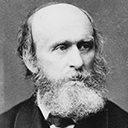0264 The Arts Policy of the Habsburg Empire in the Long 19th Century – "for the Good of Internal Peace within the Empire"
Identifiers (Article)
Abstract
The ꞋLong 19th CenturyꞋ saw the development of modern arts policy in many European countries and also in the Habsburg monarchy. Although the creation of national codes was not yet completed at that time, the measures adopted for the promotion of the arts did play an important role in the cultural development of Central Europe at the turn of the century. In fact, the efforts of various generations of politicians and administrators aiming at creating some sort of cultural identification patterns, which were oriented to the common State, left their mark in the collective memory. Most notably, a remarkable effort was made to give broader parts of the population access to the arts. Hence, the promotion of the arts soon became one of the tasks of the modern "cultural State", whose effects were going to last beyond the end of the Monarchy. The basis for these common communication spaces was not to be found in a Habsburg-Austrian "Leitkultur" (core culture) focused on Vienna, but in the acceptance of the cultural diversity existing in this area.
Statistics


License

This work is licensed under a Creative Commons Attribution-NonCommercial-NoDerivatives 4.0 International License.



